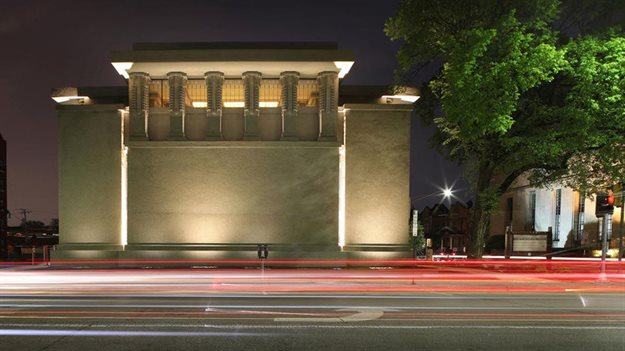
Top stories




The eight buildings were designed by the architect during the first half of the 20th century. These include the Fallingwater (constructed 1936-1939, Mill Run, Pennsylvania), the Herbert and Katherine Jacobs House (constructed 1936-1937, Madison, Wisconsin) and the Solomon R. Guggenheim Museum (constructed 1956-1959, New York).
Other properties include: Unity Temple (constructed 1906-1909, Oak Park, Illinois), Frederick C. Robie House (constructed 1910, Chicago, Illinois), Taliesin (begun 1911, Spring Green, Wisconsin), Hollyhock House (constructed 1918-1921, Los Angeles, California), Taliesin West (begun 1938, Scottsdale, Arizona).

These buildings reflect the "organic architecture" developed by Wright, which includes an open plan, a blurring of the boundaries between exterior and interior and the unprecedented use of materials such as steel and concrete. Each of these buildings offers innovative solutions to the needs for housing, worship, work or leisure. Wright's work from this period had a strong impact on the development of modern architecture in Europe.

The World Heritage Committee has been holding meetings from 30 June to 10 July in Baku, Azerbaijan for the 43rd session. The list includes 1,092 UNESCO Heritage Sites around the globe, and 24 of them are located in the United States. The selected projects of Wright span 50 years of Wright’s career. UNESCO considers the international importance of a potential World Heritage Site based on its "outstanding universal value", which in the Wright series is manifested in three attributes.

"This recognition by UNESCO is a significant way for us to reconfirm how important Frank Lloyd Wright was to the development of modern architecture around the world," says Barbara Gordon, executive director of the Frank Lloyd Wright Building Conservancy.
"There are nearly 400 remaining structures designed by Wright. Our hope is that the inscription of these eight major works also brings awareness to the importance of preserving all of his buildings as a vital part of our artistic, cultural and architectural heritage. All communities where a Wright building stands should appreciate what they have and share in the responsibility to protect their local and world heritage."

First, it is an architecture responsive to functional and emotional needs, achieved through geometric abstraction and spatial manipulation. Second, the design of the buildings in this series is fundamentally rooted in nature’s forms and principles. Third, the series represents an architecture conceived to be responsive to the evolving American experience, but which is universal in its appeal.
The Wright nomination has been in development for more than 15 years, a coordinated effort between the Frank Lloyd Wright Building Conservancy, each of the nominated sites and independent scholars, with a substantial financial commitment realised through subsidies and donations, countless hours donated by staff and volunteers, and the guidance and assistance of the National Park Service.

The nomination effort was spearheaded by Fallingwater Director Emerita and founding conservancy board member Lynda Waggoner, with Fallingwater contributing support and expertise in the nomination’s preparation. The conservancy will now coordinate the activities of the Frank Lloyd Wright World Heritage Council, chaired by Waggoner, which was established to support the responsible conservation and promotion of the eight World Heritage sites.
In 2015, the US nominated a series of 10 Wright-designed sites to the World Heritage List. At its meeting in Istanbul, Turkey, in July 2016, the World Heritage Committee decided to “refer” the nomination for revisions. Over the past two years, the Frank Lloyd Wright Building Conservancy worked with the council of sites and leading scholars to revise the nomination and rework the justification for inscription.

The National Park Service submitted the Wright nomination to the World Heritage Centre in Paris on 20 November 2018, and it was reviewed and inscribed at the 2019 session of the World Heritage Committee, on Sunday, 7 July.
Article originally published on World Architecture Community.

Since 2006, World Architecture Community provides a unique environment for architects, architecture students and academics around the globe to meet, share and compete.
Go to: https://worldarchitecture.org/